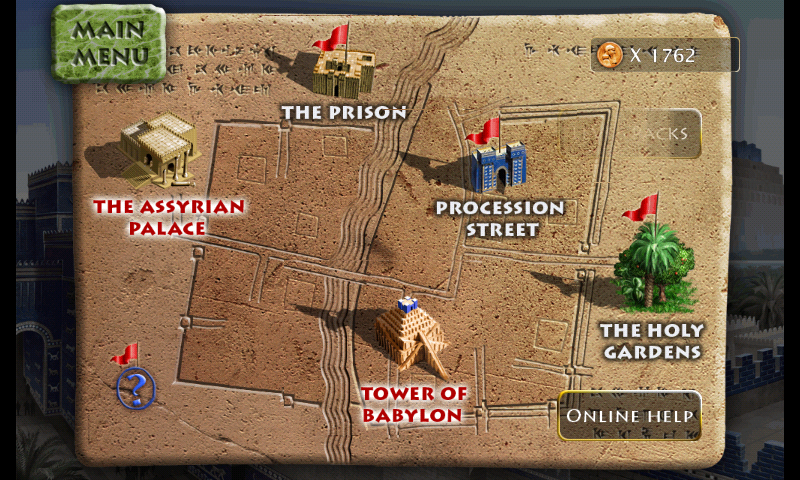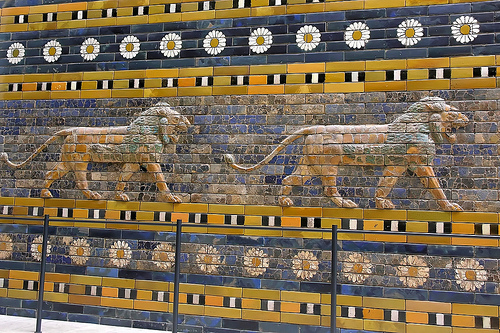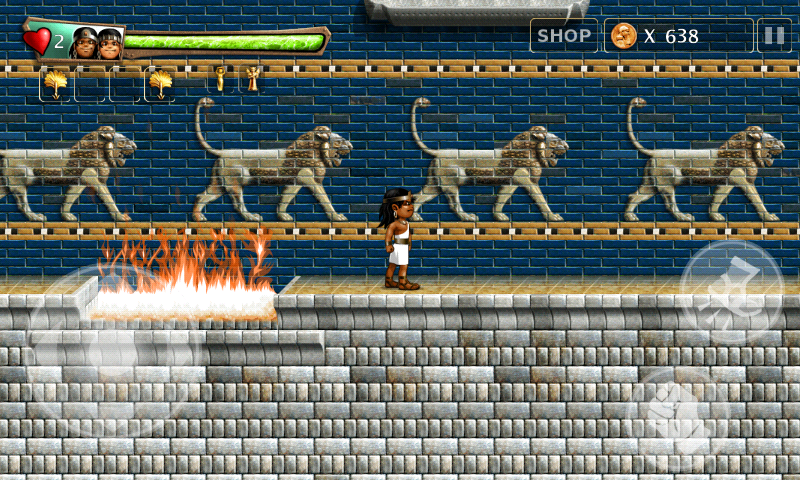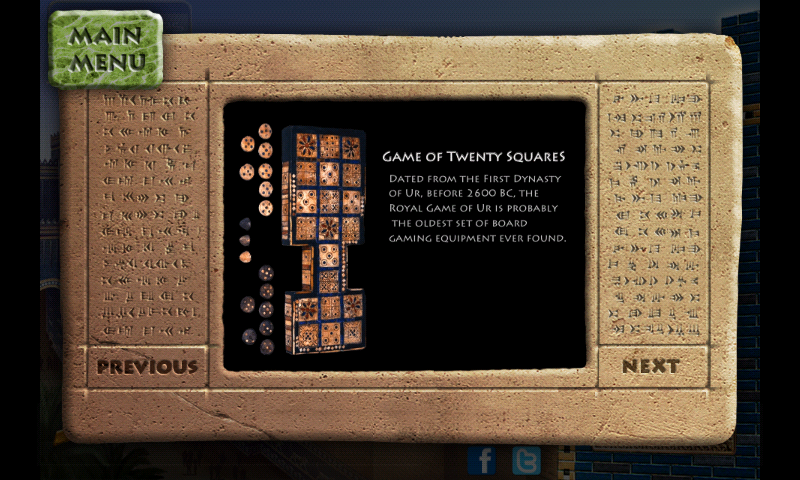Thanks to the game Babylonian Twins, iPhone and Android users can explore creative renditions of monuments in and near ancient Babylon, including the legendary hanging gardens, the Ishtar gate and processional way, and the ziggurat some believe to be the Biblical Tower of Babel. As players guide the twin princes Nasir and Blasir in their quest to bring peace back to the city of Babylon, they travel throughout the city’s landmarks and experience its art and artifacts in a compelling context.

It is not surprising to learn that the detail and care in representing Babylon’s cultural heritage was intentional. The game’s author, producer, and programmer, Rabah Shihab, once stated in an interview:
Actually, one of my motives for building the game was to show the world that Iraq is not primarily a country of wars and sanctions, but a country of history, art and great culture. For this reason, most of the game’s graphics were drawn from authentic history books and the game’s original music uses traditional middle eastern instruments.
When I say that the artifacts represented in Babylonian Twins are set in a “compelling context,” what I mean is that these artifacts are represented in a setting that allows players to gain a sense of what an ancient Mesopotamian city would have been like while having fun. Players unfamiliar with Mesopotamian art history might not realize that they’re cavorting around representations of ancient artifacts like the giant gate-guarding Lamassu, the seated statue of Gudea, the lapis lazuli glazed bricks of the processional way, and relief sculptures like Ashurnasirpal II killing lions, but Shihab’s point remains: Babylon and the middle east have a beautiful, impressive material culture. The game is also an important piece of Iraq’s cultural history, since it’s arguably the first commercial quality video game produced in Iraq.

Photo © Martin Biskoping 2007

Babylonian Twins embodies the noble desire to represent and reclaim the cultural heritage of a people struggling to preserve their own history and economically. When Shihab started working on Babylonian Twins in 1993, Iraq was in economic turmoil to the point that he couldn’t find a publisher to support the game for release on the platform it was designed and programmed for, the Amiga. Shihab recalled that everyone during that time, including University students, lined up for jobs to work on Saddam Hussein’s palaces. Ironically, these construction efforts that fueled the economy included the “reconstruction” of Babylon’s processional way, Nebuchadnezzar II’s palace, and the construction of a new palace at Babylon for Hussein – efforts that many archaeologists opposed and that partially caused UNESCO to turn down Iraq’s bid to make Babylon a World Heritage Site.
By the time the original Babylonian Twins team (Shihab, Murtadha Salman, and Mahir Hisham) reunited in 2009 to publish the game for the iPhone and other platforms, Babylon had suffered even more damage thanks to war – one of the things that motivated Shihab to create Babylonian Twins in the first place. Back in 2003-2004, American and Polish troops turned Babylon into a base of operations, damaging the site by exposing it to chemicals in fuel, digging trenches, and contaminating its archaeological integrity by filling areas with gravel. And the ancient city isn’t getting a break now either, thanks to the construction of an oil pipeline under the site. Things aren’t totally hopeless, however – the World Monuments Fund is currently working with the Iraq State Board of Antiquities and Heritage to assess damage to the site and stabilize it.

Considering all these issues, the game Babylonian Twins plays a unique role in today’s popular culture. It gives over a million users around the world a better understanding of Iraq’s past and (I sincerely hope!) a connection to its current struggles to preserve its history. It’s a way to get people thinking about this topic without dwelling on the negative facts concerning the treatment of the site of Babylon or perceptions surrounding the Iraqi people. In comparison, a more difficult and confrontational approach to considering these issues of loss and cultural looting was taken up by artist Michael Rakowitz, who created an art installation called The invisible enemy should not exist (2007). Rakowitz created reconstructions of artifacts looted from the National Museum of Iraq, Baghdad, in the aftermath of the US invasion of April 2003. The exhibition, which displayed the reconstructed artifacts on a long, continuous table alluding to the Processional Way, “represents the incipient stage of an ongoing commitment to recuperate the over 7,000 objects that remain missing.” Actually, The invisible enemy should not exist is a bit more complicated than I’ve explained here and worth reading about via the link above. But that supports my point – Rakowitz’ project has a higher barrier of entry and demands a lot from its participants and viewers, as it should. It’s worthwhile, brilliant, and necessary – but it’s not going to draw in as many people as a commercial quality game like Babylonian Twins.
I wonder if there’s a way to ask those million users, and to ask the Iraqi oil ministry: in another 5, 10, or 20 years, do we want the site of Babylon to exist only in video games and digital reconstructions? Do we want its treasures to only exist in museums scattered throughout the world? If the answer is no, then something has to change in the way the world treats Babylon. Could a commercially viable game ask those kinds of questions and get people interested in the answers? Or is it better for them to serve as an easy and enjoyable introduction? I’m curious – now that Babylonian Twins has over 1 million users and has gotten some well-deserved attention in press, do Shihab and the other developers have any responsibility in promoting the preservation of the archaeological site?
